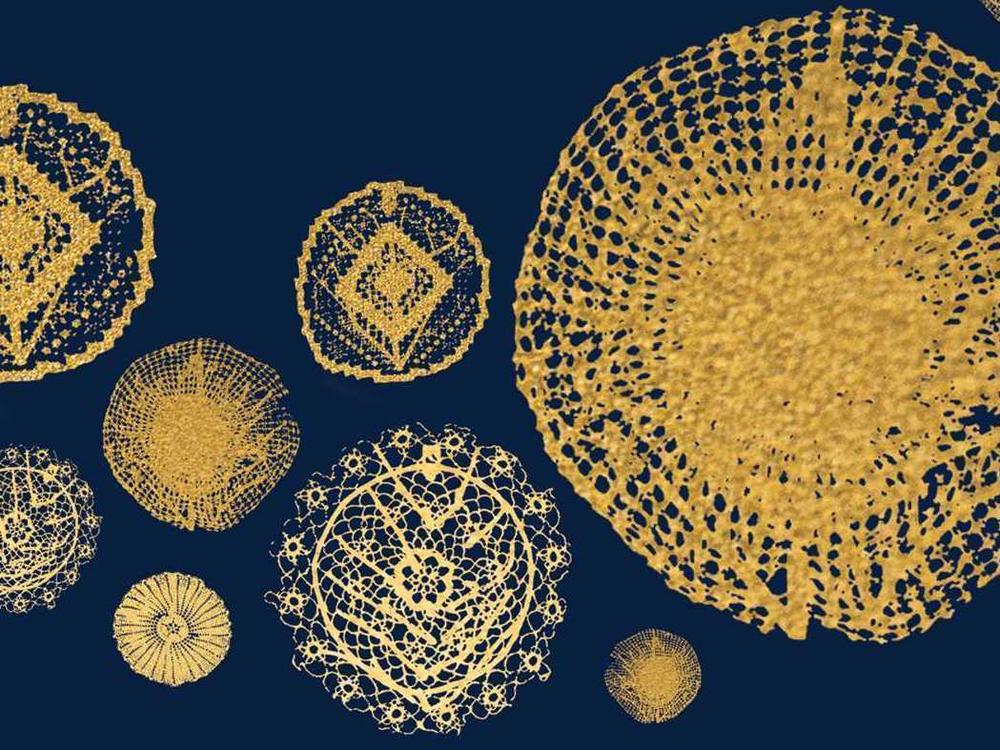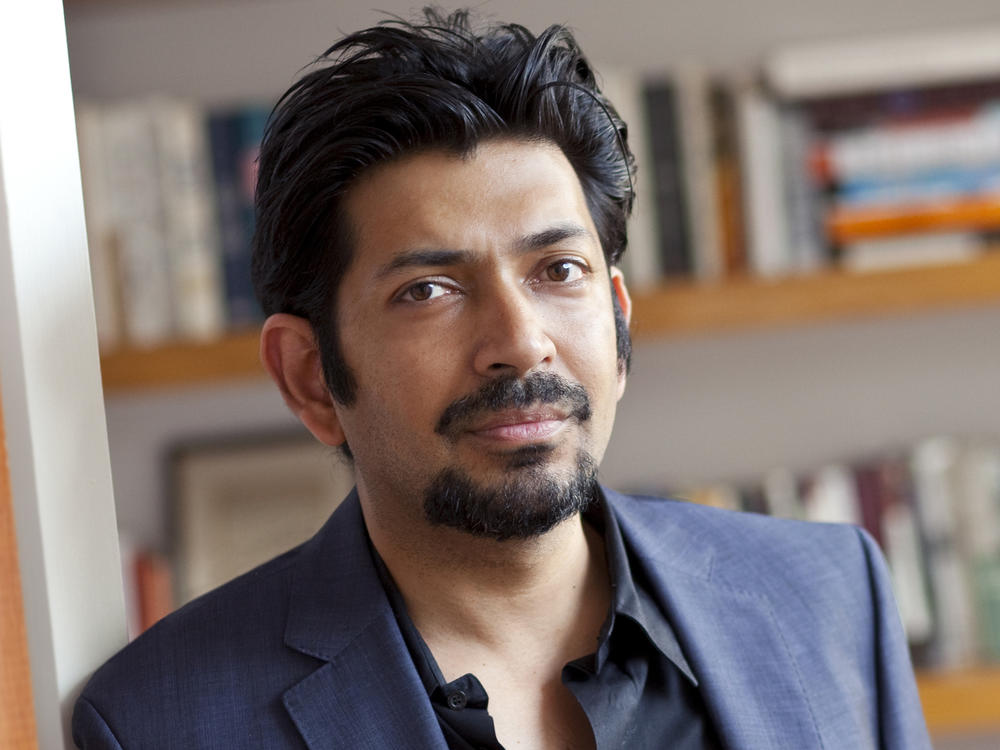Section Branding
Header Content
A cell biologist shares the wonder of researching life's most fundamental form
Primary Content
Dr. Siddhartha Mukherjee still remembers the first cell he cultured: It was an immune cell from a mouse, and he had grown it in a petri dish. As he examined it through a microscope, the cell moved, and Mukherjee was fascinated.
"I could sense the pulse of life moving through it," he says. "You suddenly realize that you're looking at the basic, fundamental unit of life and that this blob that you're seeing under the microscope — this glimmering, refulgent blob of a cell — is the basic unit that connects us and plants and bacteria and archaea and all these other genera and taxa across the entire animal and plant kingdoms."
As an oncologist, cell biologist and hematologist, Mukherjee treats cancer patients and conducts research in cellular engineering. In his new book, The Song of the Cell, he writes about the emerging field of cell therapy and about how cellular science could one day lead to breakthroughs in the treatment of cancer, HIV, Type 1 diabetes and sickle cell anemia.
Mukherjee has a particular interest in T cells — a type of white blood cell and part of the immune system activated to fight disease. He's been treating patients in India who have certain types of cancer with genetically engineered T-cell variants, and the results have been striking: "One day the cancer's there. The next day the cancer is virtually gone, eaten up by these T cells," he says.
Genetically engineered T cells, known as CAR [chimeric antigen receptor ] T cells, have become a staple in the treatment of certain kinds of leukemias, lymphomas and blood cancers. But, Mukherjee says, the cells have not yet proven effective in combatting the solid tumors, like those associated with lung and prostate cancer. His hope is that further research might change that.
"It's hard for me to convey the excitement that's sweeping through the whole field of cell biology ... the kind of headiness, giddiness, the madness, the psychic power that grips you once you get into the field," Mukherjee says.
Interview highlights
On using CAR-T cell therapy to treat Emily, a child with leukemia
[The treatment is] we extract the T cells from the from a patient's body. And then we use a gene therapy to basically weaponize them, to activate them and weaponize them against the cancer. We grow the T-cells in flasks in a very, very sterile chamber. And then ultimately when the cells have grown and activated, we re-infuse them into the patient's body. So it's sort of gene therapy plus cell therapy — given back to a patient.
In Emily's case, she was about 7, I think, when she was first treated. She had a complete response. She also had a very terrifying course. When the T cells get activated, they release an incredibly inflammatory cascade, sort of like, as I say in the book, it's sort of like soldiers on a rampage. And you can get so much of a rampage of T cells killing cancer that body goes berserk, it can't handle this kind of attack. Now, Emily, fortunately, was treated with a medicine to dampen down that attack so that she ultimately survived. She was the first child treated with this therapy to survive and serves an icon for this kind of therapy. ... She still is alive today and applying to colleges, I hear.
On how the engineered cells target the cancer cells
One angle is to basically find something on the surface of a cell, a flag, as it were, that will tell the immune system that it's not part of the normal repertoire of cells. So, for instance, if I was to graft a piece of skin from one human being to another, that piece of skin would be rejected. And that's because the skin cells have flags on their surface, specific molecules on their surface, which are recognized by T cells. And T cells go in and say, "Wait a second, you don't belong to this person" — and they will reject them. And that's why the skin graft is rejected. So one mechanism by which you can specifically direct the immune system against any cell type is to find such a flag that's in [the targeted] cell ... and essentially engineer, using a variety of genetically engineering methods, engineer a T cell or make antibodies against that flag, that molecule, that protein that's on the cell surface ... and drive the immune system to reject that cell type.
On how his experience with depression helped him empathize with his seriously ill patients
I could sense the sense of doom and also the sense of uncertainty. Uncertainty itself causes anxiety, which is actually one of the most prominent symptoms of depression. Often people will come and tell you, "I'm extraordinarily anxious," but in fact, what's going on with them is that there's an underlying depressive component to this. The anxiety is a manifestation of that. It's the manifestation of a mood disorder, rather than some kind of particular panic that's going on through their brain. And I think illness causes one of the most profound forms of anxiety that we know. And so I very much encourage, particularly cancer patients, to seek out psychiatric help, talk therapy, medicines, if needed. And any kind of therapy that will help them because my own experience with my mood and my mood disorder allowed me to really understand what patients go through.
On the anti-science sentiment during the pandemic in the U.S.
[During the] very uncertain time that we had around the pandemic, things seemed to change and there was this big anti-science sentiment that kept saying, "Scientists are egghead idiots because they keep changing their minds." But we keep changing our minds because we retain the luxury or the prerogative to change our minds when facts change. And in the pandemic, facts kept changing. ...
There's a difference between uncertainty and authority. Uncertainty is not knowing something. ... False authority is claiming something, even when you don't know it. And I think that those are two different things. And part of the anti-science sentiment that swept through the United States during the pandemic was because of the confusion between uncertainty and false authority or authority. There were many uncertainties and they kept changing. And that's part of the reason that the CDC changed, the FDA changed. We had to adapt to multiple changes multiple times. I'm not saying they were always right. They could evolve. They were sometimes wrong. They were sometimes right. But what I am saying is that the ... scientific process had to be maintained and was maintained throughout the pandemic.
Sam Briger and Thea Chaloner produced and edited this interview for broadcast. Bridget Bentz, Molly Seavy-Nesper and Deborah Franklin adapted it for the web.
Copyright 2022 Fresh Air. To see more, visit Fresh Air.


